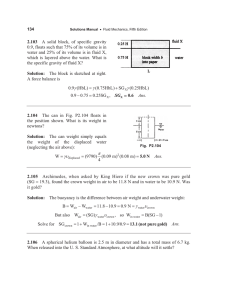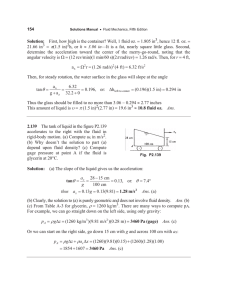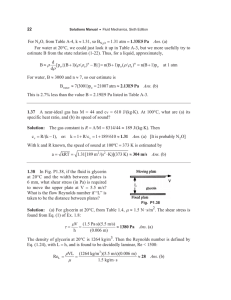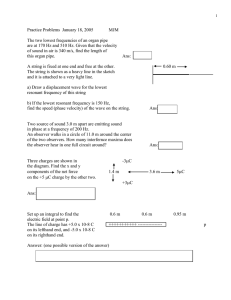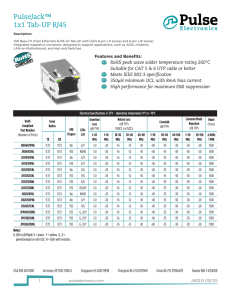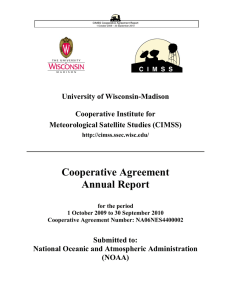6.5 transition to turbulence can be induced by
advertisement
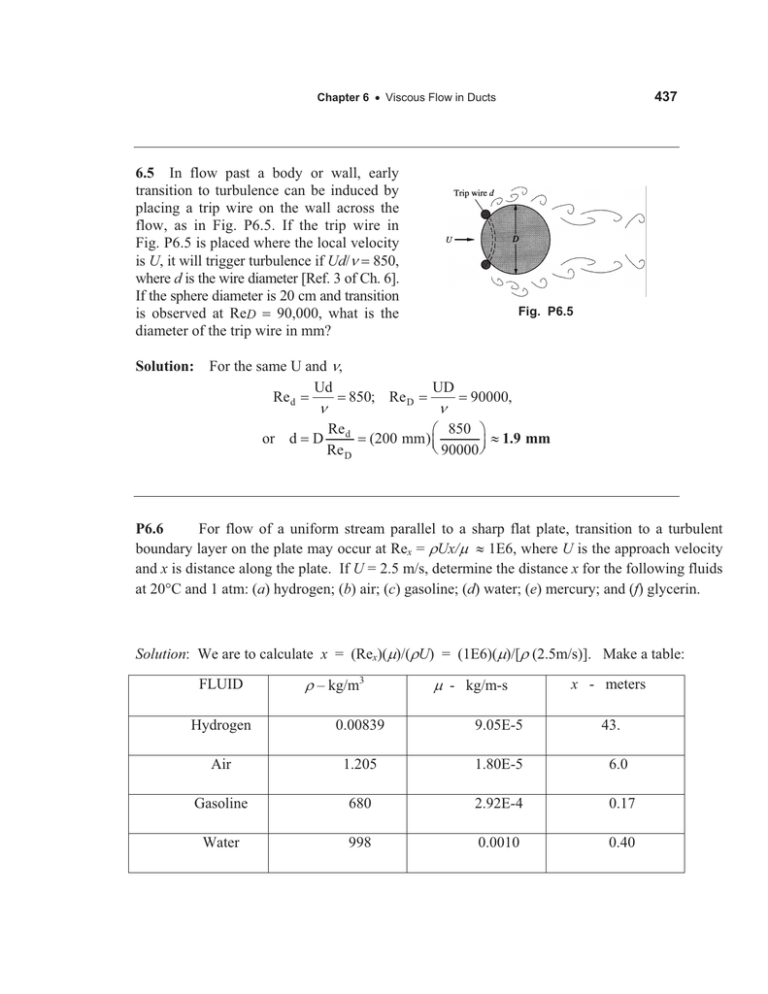
437 Chapter 6 x Viscous Flow in Ducts 6.5 In flow past a body or wall, early transition to turbulence can be induced by placing a trip wire on the wall across the flow, as in Fig. P6.5. If the trip wire in Fig. P6.5 is placed where the local velocity is U, it will trigger turbulence if Ud/Q 850, where d is the wire diameter [Ref. 3 of Ch. 6]. If the sphere diameter is 20 cm and transition is observed at ReD 90,000, what is the diameter of the trip wire in mm? Solution: For the same U and Q, Ud Re d 850; Re D Q or d D Re d Re D Fig. P6.5 UD Q 90000, § 850 · (200 mm) ¨ | 1.9 mm © 90000 ¸¹ P6.6 For flow of a uniform stream parallel to a sharp flat plate, transition to a turbulent boundary layer on the plate may occur at Rex = UUx/P | 1E6, where U is the approach velocity and x is distance along the plate. If U = 2.5 m/s, determine the distance x for the following fluids at 20qC and 1 atm: (a) hydrogen; (b) air; (c) gasoline; (d) water; (e) mercury; and (f) glycerin. Solution: We are to calculate x = (Rex)(P)/(UU) = (1E6)(P)/[U(2.5m/s)]. Make a table: FLUID U – kg/m3 P - kg/m-s x - meters Hydrogen 0.00839 9.05E-5 43. Air 1.205 1.80E-5 6.0 Gasoline 680 2.92E-4 0.17 Water 998 0.0010 0.40 438 Solutions Manual x Fluid Mechanics, Fifth Edition Mercury 13,550 1.56E-3 Glycerin 1260 1.49 0.046 470. Clearly there are vast differences between fluid properties and their effects on flows. 6.7 Cola, approximated as pure water at 20qC, is to fill an 8-oz container (1 U.S. gal 128 fl oz) through a 5-mm-diameter tube. Estimate the minimum filling time if the tube flow is to remain laminar. For what cola (water) temperature would this minimum time be 1 min? Solution: For cola “water”, take U 998 kg/m3 and P 0.001 kg/ms. Convert 8 fluid ounces (8/128)(231 in3) | 2.37E4 m3. Then, if we assume transition at Re 2300, Re crit 2300 U VD P 4UQ , or: Q crit SP D Then 'tfill X/Q 2.37E4/9.05E6 | 26 s Ans. (a) (b) We fill in exactly one minute if Qcrit Q crit 3.94E6 2300S (0.001)(0.005) m3 | 9.05E6 4(998) s m3 s 2.37E4/60 2300SQ D 4 3.94E6 m3/s. Then if Q water | 4.36E7 m 2 /s From Table A-1, this kinematic viscosity occurs at T | 66qC Ans. (b) 6.8 When water at 20qC (U 998 kg/m3, P 0.001 kg/ms) flows through an 8-cmdiameter pipe, the wall shear stress is 72 Pa. What is the axial pressure gradient (wp/wx) if the pipe is (a) horizontal; and (b) vertical with the flow up? Solution: Equation (6.9b) applies in both cases, noting that Ww is negative: (a) Horizontal: (b) Vertical, up: dp dx dp dx 2W w R 2W w dz Ug R dx 2(72 Pa ) 0.04 m 1 3600 3600 998(9.81) Pa m Ans. (a) 13, 400 Pa m Ans. (b)
